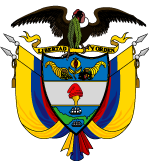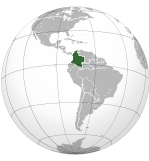Networked Economy
How are businesses and governments using information and communication technologies to interact with the public and with each other?
14. ICT Employment Opportunities (Stage 3)
Colombia is included in the newly dubbed CIVETS (Colombia, Indonesia, Vietnam, Egypt, Turkey, South Africa) acronym representing a group of countries with growing economies. CIVETS countries are expected to exhibit growth and performance over the coming decade similar to that of the BRIC (Brazil, Russia, India, China) countries of the late 1990’s and early 2000’s. In a Reuters article dated April 27, 2010, the CEO of Europe’s largest bank, HSBC, was quoted as saying of the CIVETS countries “…each has a very bright future…each has a large, young, growing population. Each has a diverse and dynamic economy. And each, in relative terms, is politically stable.” (Reuters, 2010)
A Newsweek article in July 2010 referenced Colombia’s top billing in the CIVETS acronym, citing that country’s 250 percent increase in foreign investment over the past 8 years.
Colombia appears to be one of the stars of the world’s emerging markets and should exhibit superior growth and development in coming years.
We rate the ICT employment opportunities in Colombia as Stage 3. Increasingly, foreign technology companies are making major investments in local support and service centers. This foreign investment, coupled with rapid local technological growth is spurring a need for a skilled IT workforce.
15. Business-to-Consumer (B2C) Electronic Commerce (Stage 2)
Colombia has lagged behind its neighboring countries in the area of e-commerce. In 2005 Colombia accounted for only 0.4% of all e-commerce transactions in Latin America, while making up nearly 10% of the population. However, the combination of continued economic growth and improvements to IT infrastructure has made it likely that e-commerce will rise in the near future.
There are also international trade policies likely to impact e-commerce in Colombia. The United States-Colombia Trade Promotion Agreement was signed on November 22, 2006; however, as of August 16, 2010, the agreement has not been ratified by the U.S. Congress. Currently, most U.S. products exported to Colombia face duties of 12-20%, while most products flowing from Colombia to the U.S already do not face duties. Once implemented, tariffs and duties will be removed from all but a few select products, paving the way for increased e-commerce between the U.S. and Colombia. Canada has reached a similar free trade agreement with Colombia, which was approved by Canadian Parliament in June of 2010.
We rate Colombia’s B2C e-commerce as Stage 2. The country lags behind other large Latin American countries in this area. E-commerce presents an opportunity for future growth in Colombia.
16. Business-to-Business (B2B) Electronic Commerce (Stage 3)
Colombia has become a top destination for technology companies seeking to establish strategic a presence in Latin America. In July 2010, Hewlett Packard announced plans to open a service center in the city of Medellin, Colombia. The center will initially employ approximately 1,000 HP workers, with anticipated growth of up to 3,000 total employees within a few years. The HP announcement is just the latest in a string of investments in Colombia by IBM, Citibank, and the French CRM and service provider, Teleperformance. Total ICT investment in Colombia over the past 7 years has totaled over $2.5 billion. 76% of that investment has taken place in the past three years, indicating a significant growth trend for foreign investment.
In 2009, Microsoft Latin America made changes in Colombia, which involved the establishment of new country subsidiaries including Microsoft Colombia. Also in 2009, SAP completed a large enterprise resource planning (ERP) implementation for Banco de Credito Colombia, which is a subsidiary of Helm Financial Services Group. SAP has also chosen Colombia as a possible market for its governance, risk and compliance solution, to further develop the market in Colombia.
We rate Colombia’s B2B e-commerce as Stage 3. The country is rapidly becoming a technological hub in Latin America, driven by large investments by foreign operators and necessitating the deployment of improved electronic communication networks and software systems.
17. E-Government (Stage 4)
In 2000 president Andrés Pastrana ordered all federal agencies of the Colombian government to develop and maintain a website. This directive, the Connectivity Agenda, also created the Ministry of Communication and charged the new department with overseeing the implementation of the project. The Connectivity Agenda spread beyond the federal government and by 2006 had helped more than 260 municipal governments establish a presence on the Internet.
In early 2009, the Korean government conducted on-site training programs in Bogota for Colombian government officials. The training programs were used to share Korea’s knowledge, experience, and best practices regarding e-government with the Colombian officials. The training was provided to help Colombia construct an efficient and pertinent strategy for its growing e-government projects. It introduced Colombia to modern ICT concepts and technologies that Korea successfully employs. The training programs were part of a 50 year anniversary celebration of friendship between Korea and Colombia, as a part of the Colombian governments “Technical Cooperation for Supporting the Execution of the ICT National Plan”. These training programs were financially supported by the Korean International Cooperation Agency.
We rate Colombia’s e-government development as Stage 4. Government agencies were relatively early in deploying Internet portals to provide citizens and foreign investors with information and resources. The country’s leadership has recognized the importance of a significant and comprehensive Internet presence and is taking steps to improve the flow of information and streamline operations.
 Colombia’s Networked Readiness
Colombia’s Networked Readiness